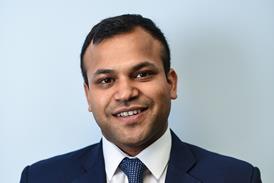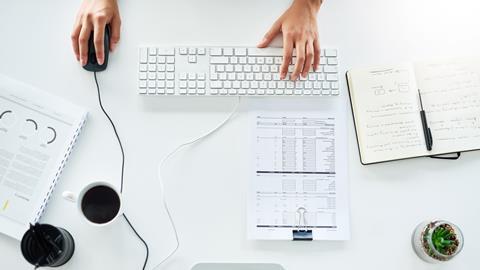A few short years ago, presentations about technology and the law often centered on artificial intelligence and whether robots would replace lawyers, usually featuring a cyborg with a cold stare.
Fast-forward to 2020 and we’re in the grip of a global health crisis which has pushed technology even further up the agenda.
And yet, the primary driver of technology adoption has been to keep (fully human - despite any jokes to the contrary!) lawyers connected: to their clients; colleagues; and data.
Recent events have also accelerated debates around whether legal is always a special use case (‘lawtech’ vs ‘technology’ with a small ‘t’) and whether we always need something ‘new’.
In challenging times, there is a clear case for making the most out of the technology one already has. But where to start? And how to overcome any barriers to achieving this?
On the 22 and 23 September the Law Society ran its inaugural (and - inevitably - virtual) Technology Conference.
We asked a panel comprised of Catherine Bamford (CEO and founder, BamLegal); Christie Guimond (senior manager, innovation and engagement at White & Case LLP); and Helen Lowe (head of legal operations at easyJet) to tackle this subject. What follows are my key takeaways from what was a very insightful and engaging panel session.
Ensure the right resources (people) are in place
To get the most out of technology, you must look beyond what it does and plan for how you expect to get value from it and – most importantly - who will drive this.
Without dedicated resource in place the full potential of existing technologies can be missed.
As Catherine Bamford pointed out, if business as usual has eased off due to the pandemic, now may be a good opportunity for people to explore technology-related projects. This could be structured – via secondments for example - or encouraged more informally.
For most applications, self-directed learning is very possible, with a wealth of free resources available online.
Look beyond your own team
You don’t always have to find or procure technology yourself. Helen Lowe’s advice was to investigate whether other functions, such as procurement or finance for example, may already have systems which could quickly be leveraged by lawyers.
Know your client(s)
In some cases, existing technology may not be used to its fullest potential for the simple reason that not all the problems it could solve have been identified. Christie Guimond referred to this as a ‘knowledge gap’ and stressed the importance of taking the time to ask clients: 'what is the thing that is keeping you up at night?'
Don’t overlook free tools
With the ‘Eat Out to Help Out’ initiative over there is, once again, no such thing as a free lunch. But if your existing technology isn’t up to a task, you may be able to find free tools which will do the job.
In Catherine Bamford’s experience, certain tasks for example automating a simple workflow or non-disclosure agreement, are perfectly possible using free tools.
Again, this turns on committing some resource to identifying these opportunities and exploring what’s available.
Start with collaboration
When assessing whether you can do more with your existing technology, a good place to start is looking at opportunities to enhance collaboration with clients.
Helen Lowe expressed the view that moving away from more cumbersome ways of working, for example passing documents back and forth by email, to using cloud-based collaboration and co-authoring tools is often a ‘huge opportunity that’s being missed’ to make a real difference to the dynamic between law firms and their in-house clients.
Clients also need to play their part by fostering ‘a very human relationship’ where lawyers can feel comfortable working with clients looking over their virtual shoulders in real-time and understand that they are not expected to get it right first time, every time.
Review how existing technology is being used
Implementation and roll-out is only the first step.
Without a plan for capturing and reviewing usage data, you may be flying blind when it comes to allocating resources and maximizing ROI.
Downsides can be financial (for example, paying significant license fees for software that is barely used) or more practical, such as losing the opportunity to spot patterns which would enable you to optimize the user experience.
Catherine Bamford illustrated this with an example in the context of automatically generating documents based on lawyers’ answers to a series of questions. If the answer to a certain question is always ‘yes’ or always no – that question should be removed, and the standard position should be reflected in the default template.
Look for opportunities to integrate
As technology solutions are added over time, jumping between them all can become such a frustrating experience that otherwise useful software might ultimately be consigned to a virtual store cupboard full of digital dust.
In time, we might see the emergence of a truly comprehensive legal ‘platform’ (bringing many different technologies together as part of one cohesive interface) – what Christie Guimond described as the ‘Holy Grail’.
However, until we find one platform to rule them all, there is an alternative approach. Catherine Bamford suggested that the ‘integrators’ can instead be people. You could consider hiring one or two software developers and/or data scientists and task them with creating more seamless connections between various systems – be they legacy solutions or new products.
Learn from (and educate) your suppliers
If you’re not sure what your existing technology can do – or how to achieve a certain result – ask the supplier! They know their own products better than anyone else and support of this nature is typically included as part of the supply contract. Don’t be apprehensive about asking for support, training, demonstrations etc.
On a similar note, vendors won’t always know/understand your specific needs and use cases. Invest time in helping them to understand what you and your colleagues do and what your needs are. They will then be better placed to help you identify and leverage any previously untapped capabilities of your existing technology which is of course a win-win.
It’s not (just) about the money
Getting the most out of your existing technology will inevitably require (at the least) some investment of time from you and/your people. Where this takes people away from fee earning or directly supporting the revenue-generating activities of your internal client, this can seem like a poor return on investment.
When making these assessments, take some time to consider second or third order consequences.
If investing in existing technology results in new capabilities, more streamlined user experiences and more integrated workflows, the lawyers using it will be happier. Not only is that a win from a cultural and well-being perspective, it will almost certainly translate into more productive - and profitable - performance.
It’s all about people
Reviewing these suggestions in the round, we find ourselves back where we started - talking about people, not robots.
Encouraging and empowering people to learn and explore. Engaging with people outside our legal bubbles. Talking and collaborating openly with clients. Investing in relationships with suppliers.
With that, perhaps the best way to close is with this quote from Christie Guimond:
'It all boils down to having the right people, with the right skillsets, doing the right things.'
Thanks again to our superb panel as well as everyone that joined us live and contributed their thoughts and questions for making this such an insightful and engaging session.
Panicos Iordanou is head of commercial development at the Law Society
- The Law Society’s Technology Conference 2020 was kindly sponsored by our trusted cybersecurity partner, Mitigo.
Recordings of both days are available to view online:



























1 Reader's comment